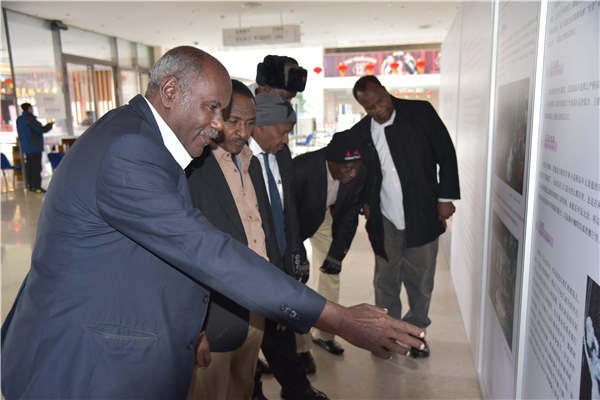 |
|
Sudanese acrobats look at publicity boards at the Beijing Tianqiao Arts Performing Center. [Photo provided to China Daily] |
"I often flew to Sudan in those years and selected candidates one by one. Many Sudanese boast good physical conditions and have an edge in plyometrics exercises, which is a solid foundation for becoming a qualified acrobat," he said.
Thanks to the joint efforts of Chinese instructors and Sudanese trainees, the students mastered more than 20 acrobatic techniques including aerial acts, the pagoda of bowls, wire-walking, tightrope-walking, trick-cycling and hand walking.
It is worth noting the trainees finished their tasks half a year ahead of schedule. In May 1974, they returned to Sudan and founded the first acrobatic troupe the same year.
"It was not an easy task for us to establish the troupe starting from scratch. But our 'Chinese parents' provided all the performance props, stage clothes and basic stage settings for free, and it really helped us a lot," Mohamed said.
The brand-new troupe at first had difficulties recruiting proper students. The locals had misgivings about such a unique art form.
To tackle the problem, Wuhan Acrobatic Troupe sent some Chinese acrobatics coaches, including "Father Zeng", to teach overseas. They not only focused on teaching work, but also racked their brains to find new ways to promote acrobatics.
It worked. More and more young locals showed interest in learning acrobatics, which helped keep the troupe alive and blossoming.